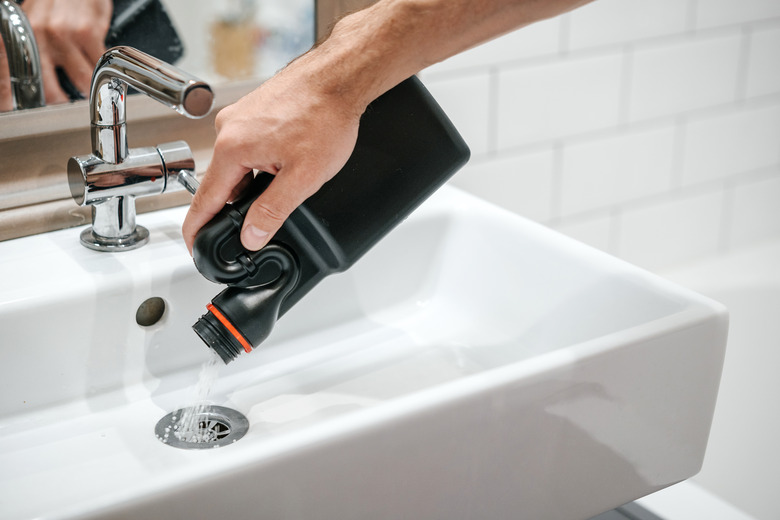How To Dispose Of Drano
Many homeowners and renters rely on liquid Drano to rid their pipes of tough clogs that can lead to backed up sinks or slow-moving drains. Drano is a lye-based drain cleaner, and it's water-soluble, which makes disposal fairly easy when it's done safely. If it becomes mixed with other household cleaners in the process or touches a person's skin or eyes, it can become toxic and potentially harmful. Like other household products, Drano can be disposed of safely by following just a few simple tips.
Is Drano Bad for Pipes?
Is Drano Bad for Pipes?
According to the company, Drano products are created with materials that are safe for use in both plastic and metal pipes, with some containing anti-corrosive materials. Before using any product, it is important to carefully read all instructions and warnings, as certain formulas may not be designed with the intent of treating all issues. It's best to check to avoid damage later on.
How to Dispose of Liquid Drano
How to Dispose of Liquid Drano
Drano can be disposed of carefully by pouring it down the drain as long as certain precautions are taken. If you don't wish to pour Drano down a drain that isn't affected by a clog, you can check with your local municipality for points and dates reserved for collection of hazardous household waste, according to the National AG Safety Database.
1. Pour Drano Down Your Sink
Pour your leftover Drano down the drain of a sink in your home after checking the instruction label for the proper amount to apply at once.
2. Flush With Plenty of Hot Water
Flush Drano down the sink using hot water for several seconds. After waiting a few minutes, repeat this step one or two more times to ensure that all of the material has been flushed through your pipes.
3. Rinse and Recycle the Container
Rinse the empty bottle and replace the cap to recycle after checking your local stipulations, as plastic Drano bottles do contain post-consumer recycled plastic material.
Things to Keep in Mind
Things to Keep in Mind
Because Drano is designed to pour into sinks, it may seem as simple as adding it to your drains and forgetting about it. To keep your pipes and appliances from possibly becoming damaged, however, there are a few things to consider beforehand. Drano should not be poured into your toilet and flushed away, as that can sometimes cause plumbing problems down the line.
Drano Max Build-Up Remover is the exception when flushing Drano down the toilet because it's the only Drano product recommended for use in toilets, according to the company. If you are going to dispose of Drano this way, be sure to flush your toilet several times, as pipes can break if the product is left to sit in them over a long period of time.
Additionally, do not pour Drano in disposal mechanisms, like garbage disposals, because damage can occur for the same reason. Often, people assume that you can pour Drano in standing water. This can be done with some products, like Drano Max Gel Clog Remover, but be sure to read the label carefully before doing so to prevent possible damage. Finally, be careful to not overuse Drano or other liquid or crystal de-clogging products. Frequent clogging can indicate a larger issue at hand, and overuse of chemicals may potentially harm old pipes.
